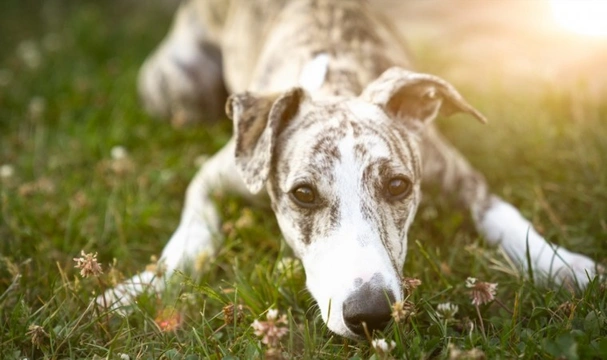
Eight interesting statistics about greyhounds in the UK
The greyhound is perhaps the best known of all of the various sighthound breeds, and the one we most commonly associate with racing. They’re also one of the larger sighthound breeds too, which means that people with smaller homes who aspire to own one might simply not have the room; but this is a breed with a lot to recommend it, and they’re not at all what many people expect!
Greyhounds have an incredibly strong prey drive and they also of course have a really fast running speed, but this doesn’t mean that the breed is also really challenging to exercise. In fact, whilst they do need to be walked appropriately and to be able to run freely in a safe place, they are one of the more sedentary dog breeds overall, and less challenging than most to provide exercise for.
This is also a unique breed in many ways, and one that has the distinctive and aerodynamic sighthound build that we associate with really fast dogs, and the more you look into the breed as a whole, the more fascinating facts you will discover!
With this in mind, this article will share eight really interesting statistics about greyhounds in the UK, including their average lifespan, level of popularity, and much more. This information is drawn from our own advertisement data from here on Pets4Homes, as well as other trustworthy sources including The Kennel Club and the Royal Veterinary College.
Read on to find out eight fascinating greyhound statistics.
Around one in every 200 dogs in the UK is a greyhound
The greyhound is a distinctive and very easy to recognise dog breed, and they’re common enough (as well as standing out clearly enough) that most dog lovers would know one if they saw one out and about.
However, they’re not the most popular breed in the UK, nor that close to the top of the list – information from the Royal Veterinary College indicates that Greyhounds make up 0.6% of the UK dog population, or a shade over one in two hundred.
Many pet greyhounds are ex racing dogs
At the time of writing, there were exactly as many adverts on Pets4Homes for greyhounds for adoption as there were for greyhounds for sale, which is uncommon and anomalous for most dog breeds.
However, ex-racing greyhounds are commonly offered for adoption or rehoming once their racing careers have ended, resulting in a high level of dogs of the breed being put up for adoption.
In many cases, greyhounds from Ireland (where greyhound racing is far more popular than it is these days in the UK) are imported to the UK for rehoming here too; and so the number of greyhounds for sale at any given point is likely to be lower than you might expect for the total size of the UK greyhound population.
Greyhounds live for 11 years on average
The average lifespan for greyhounds in the UK is 11.4 years, which is just about within the normal parameters for a dog of this size and build; however, it is a touch on the low side, with 12 years being the average overall.
Cancer is the leading cause of death for greyhounds
Cancer accounts for 21.5% of all greyhound deaths, although cancer does of course come in many different forms and can develop at various different points in the dog’s life.
Collapse is the second greatest cause of death in the breed
Collapse, which is more of a generic term than a medical description, accounts for the death of 14.3% of all greyhounds in the UK. Not all cases of collapse in greyhounds will be fatal, and prompt veterinary treatment could potentially save a dog’s life; but this still represents a significant number of dogs of the breed succumbing to collapse.
Arthritis is the third greatest cause of death in the breed
Arthritis might not be something that most of us think of as being an actual cause of death, but arthritis in greyhounds is relatively common as they get older.
At a certain point and if the elderly dog doesn’t succumb to another illness first, the degree to which they suffer from arthritis begins to impact their quality of life so badly that it is considered to be poor enough to be unviable, and so a decision to put the dog to sleep may be made in the dog’s best interests.
Arthritis is the cause of death given for 7.8% of greyhounds.
One in four greyhounds suffers from dental disease
A massive 39% of adult greyhounds in the UK, or a fraction under four in ten of them, suffer from dental disease. This indicates that few people take proper care of their greyhound’s teeth, which can cause pain, discomfort, difficulty eating normally, and further complications too.
One in ten UK greyhounds have overgrown claws
Finally, 11% or more or less one in ten greyhounds in the UK have overgrown claws or nails, which indicates that they are either not being given enough time walking on hard surfaces to wear their claws down, or that they’re simply not being walked enough full stop!
Given that this is a breed that is not overly challenging to exercise overall, there really is no excuse for this!



